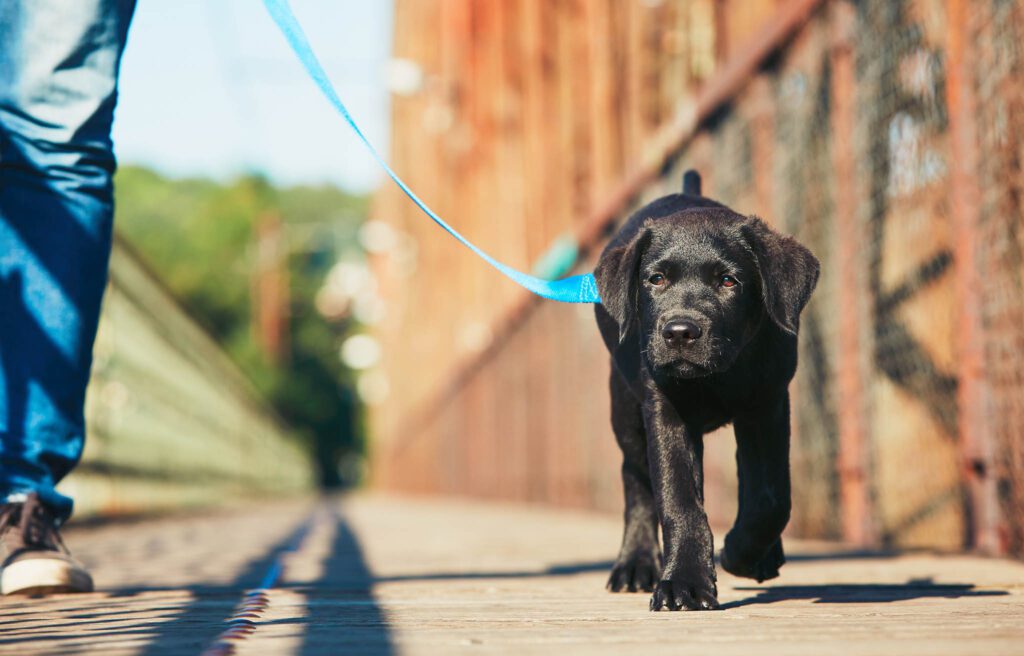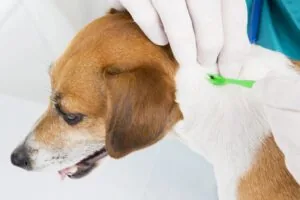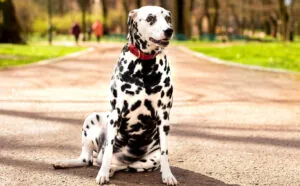Puppy Training

Leash Walking
Pulling is not a good thing
There are several ways to train a puppy to walk without pulling,but the common denominator is simple: Appropriate behavior is rewarded while inappropriate behavior isn’t. In this case, walking without tugging is appropriate and pulling on the lead isn’t. The reward for walking properly is praise and the walk itself. The “punishment” for pulling, is to stop in your tracks and don’t resume walking until the lead slacks. Then, praise and walk on. If they persist, you should tell them “no” but not make a fuss. Most young puppies resist leashes by rolling, scratching, and collapsing, but don’t give up. Don’t pick up your pup and carry him, and don’t let him just stroll along beside you without the leash. If you do, you’ll soon have an uncontrollable dog.
Stepping Out
Buy a lightweight, flat nylon, or leather buckle-style collar and a four to six foot lead of the same material (chain leashes are generally a bad idea because of their weight). Put the collar on the puppy, praising for any sign of acceptance and ignoring efforts to get out of it. Attach the lead and allow the puppy to drag it along, discourage them if they start to chew on it. Finally, pick up your end of the lead and allow your pet to explore.
Training collars are better for teaching older puppies and adult dogs. The most efficient and humane passive training device is the head collar or head halter. In contrast, “choke chains” are intended to constrict around the dog’s neck when tightened. Choke-type collars are frequently misused and work on the punishment principle. Most of the time, dogs learn to live with the uncomfortable collar and the owner ends up with a dog that will continue to tug, choke, and drag them around. They should never be used on puppies or dogs with tracheal or other neck problems.
House Training
With patience, it’s possible
By using a puppy crate or confined area, you can successfully train your pet to go outdoors. It is often the first hurdle encountered; however a general rule of thumb is that a pup will not soil in a place they sleep or eat.
How long can they “hold it”?
Even young puppies can be expected to hold it for at least a short period of time. As a general rule, they can hold it for as many hours as months they are old. Because pups sleep most of the time, they usually stay dry during the night. If you need to leave them for an extended period of time, opt to get a pet sitter or confine the puppy to a laundry room/bathroom instead of the crate. To ease clean-up or train your pup to soil on a specific spot, place newspaper over the spots previously soiled on. Paper training can be avoided all together if you routinely take them outside.
Your time-your responsibility
The best situation is to be at home with your pet most of the time; they should be taken out every few hours but if you take them too often, they may become confused about the purpose behind the visits. Once they urinate or defecate outdoors, reward them. If they don’t want to go, take them back inside (on a leash) and wait a few more minutes and try again.
Punishing your pet isn’t necessary; simply make a loud noise to distract them and take them outside. Reward for appropriate behavior and you can introduce a cue once your pet is eliminating reliably.
Share This Post
Recent Posts
About Shallowford Animal Hospital
Shallowford Animal Hospital and The Pet Spa at Shallowford are dedicated to the exceptional, compassionate care your pet deserves. Pets hold a very special place in our families, and we treat yours like our own.



